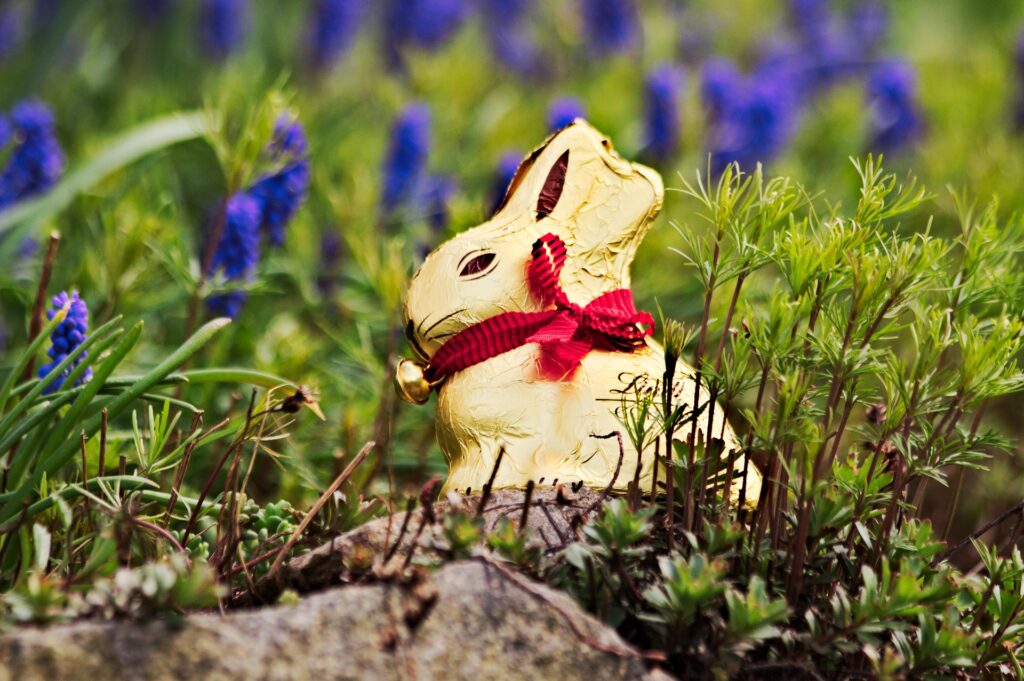
According to the German Federal Supreme Court’s decision of 29 July 2021 (Case I ZR 139/20) the gold-colored foil of Lindt’s chocolate bunny is protected by a trademark acquired through use. The Court lifted the decision of the Higher District Court Munich which had rejected an infringement action against a competing product denying trademark protection for the gold-colored foil. The case was remitted to the Higher District Court Munich for a new decision.
The infringement action is another attempt by Lindt to enjoin competitors from marketing chocolate bunny products wrapped in gold foil. Efforts to obtain protection for the shape of the gold foil wrapped chocolate bunny as an EU trademark came to an end with the European Court of Justice’s decision denying trademark protection dated 24 May 2012 (case C-98/11 P). Attempts to enforce Lindt‘s EU trademark protecting the shape of the chocolate bunny including the wording “LINDT Goldhase” against competitor’s gold foil wrapped chocolate bunny finally failed in Germany due to lack of likelihood of confusion (Decision of Higher District Court Frankfurt dated 27.10.2011 in Case 6 U 10/03).
When back in 2018 Lindt became aware of another competitor offering gold foil wrapped chocolate bunnies in Germany, it therefore brought an action before the District Court Munich not relying on its remaining registered trademark rights, but instead relying on unregistered trademark rights existing in the gold color of the foil of its chocolate bunny acquired through use, Section 4 no. 2 German Trademark Act. According to this provision, it is possible to acquire unregistered trademark rights to signs which have been used in commerce as a trademark for the relevant goods and services and have acquired a reputation among the relevant public.
Lindt was successful with its infringement action before the District Court Munich. The court confirmed that unregistered trademark rights for the gold color of the foil acquired through use existed in relation to chocolate bunnies. The court confirmed that the relevant public perceived the gold color on the packaging foil of Lindt’s chocolate bunnies as an independent indication of origin, attributing a high degree of distinctiveness to it through years of intensive advertising and use. It relied on a survey submitted by Lindt which demonstrated identification and attribution levels over 70% in Germany. It concluded that Lindt’s unregistered color mark was also infringed through the use of the gold-colored foil in the competitor’s product. The gold tone was used in both products as an independent trademark and the high similarity between the gold tones on both products resulted – regardless of further deviating elements-in a likelihood of confusion or at least a likelihood of association.
Upon appeal the decision was overruled by the Higher District Court Munich (Decision of 30 July 2020 in case 29 U 6389/19). The appeal court found that the alleged association of the golden color for chocolate bunnies by the public was based solely on the extraordinary fame of one specific Lindt chocolate bunny product (“Goldhase”) and did not extend to every form of chocolate bunny wrapped in corresponding gold foil. Rather, Lindt had been selling chocolate bunnies also wrapped in differently colored foil. The court argued that it seems far-fetched that the public would perceive the golden color of chocolate bunnies which have a shape differing from the shape of the well-known Lindt chocolate bunny as an indication of origin. It therefore denied the existence of any unregistered trademark rights in the golden color of the foil and did not have to continue to examine likelihood of confusion between the unregistered abstract color mark and the attacked product.
It will have to do this now following the Federal Supreme Court’s remittal which confirmed the existence of an unregistered abstract color mark in Lindt’s favor in relation to chocolate bunnies. The decision is not yet available in full. According to the Federal Supreme Court’s press release there was sufficient evidence that the golden foil of the Lindt Goldhase had acquired reputation as a trademark for chocolate bunnies among the relevant public. The survey submitted showed that the degree of association of the gold tone used for the foil in the field of chocolate bunnies with Lindt is over 70%, and thus clearly exceeds the required threshold of 50%. It confirmed that for proving reputation of an abstract color mark it is not required that the color is used as house mark on all or numerous products. Also, it does not speak against reputation of the gold color that it is used together with further design elements (specific shape, red collar with golden bell etc.). The fact that the golden color is also used for other chocolate bunnies must be examined in the context of likelihood of confusion.
Continuation follows…
_____________________________
To make sure you do not miss out on regular updates from the Kluwer Trademark Blog, please subscribe here.


